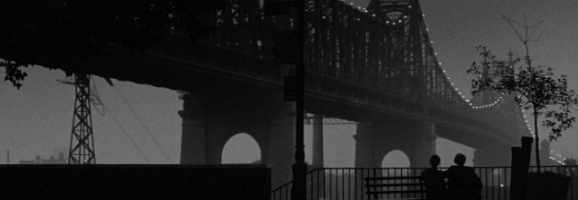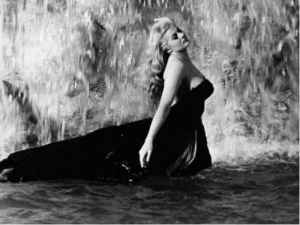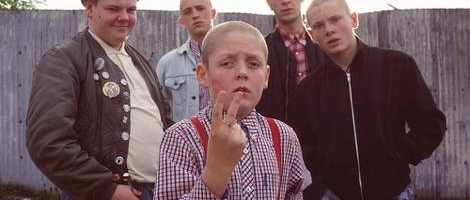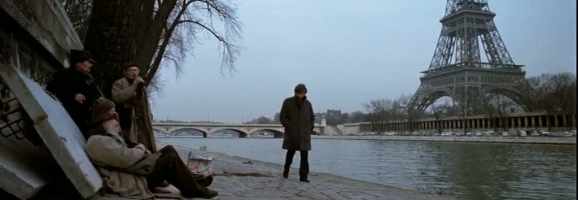5 Directors With Geographical Soft Spots: This Must Be the Place

The recent release of Bernie (2011) sees director Richard Linklater reunite with Jack Black, and his free-roaming eyebrows, after the feel good fare of 2003’s School of Rock. It also marks Linklater’s return to his native Texas and the small- town communities of his early films. Here the director shows his personal affinity with the people of these intimate, southern communities and turns the setting into a character itself. Through the run down bars of Slacker (1991) and the pristine front lawns of Bernie (2011) he captures the easy-going, down-to-earth spirit of small- town America.
Slacker features an ensemble cast of unknowns who wander the streets of Austin just looking for a way to pass the time. Dazed and Confused (1993) takes us back to the heady last days of high school for a bunch of 70s teenagers as they say a final farewell to their familiar neighbourhood haunts before heading out in to the real world. The sprawling suburbia of these forgotten places are very much alive, just functioning at a slower pace to the rest of the U.S.
In Bernie this same feeling of local colour has moved on to the small community of Carthage, Texas, focusing on the population of elderly folk, not its wayfaring youths. The aged characters recount the real life story of Bernie, played by Jack Black, telling us of how such a friendly, hard working local man came to be on trial for murder. Linklater once again exposes the beating heart of small -town Texas, peering in to the beautifully quaint homes and back gardens of an entire community.

Cinematic storytelling should have universal themes that all audience can identify with but this doesn’t mean a story can just happen anywhere. When a director has strong ties with a certain place it can have a strong impact on the look, feel and spirit of a film. Here we have a small helping of 5 directors who capture the essence of a town, city or region through the medium of cinema:
5. Woody Allen – New York

Woody Allen and New York city are now synonymous thanks to an extensive filmography dating back to 1950. Titles based around the bustling cityscape of NYC include Annie Hall (1977), Broadway Danny Rose (1984), Radio Days (1987), Crimes and Misdemeanors (1989), Husbands and wives (1992), Manhattan Murder Mystery (1993), Bullets Over Broadway (1994), Mighty Aphrodite (1995) and Sweet and Lowdown (1999) to name just a few. Famously, it is the poetic black and white cinematography of Manhattan (1979) that most living, breathing cinephiles will refer to when summing up Allen’s relationship with the city. “That scene” set against backdrop of an illuminated Brooklyn bridge sees the blossoming romance between Allen’s character Issac and Mary, played by Diane Keaton. Whether you know how the film ends or not this moment is a perfect illustration of Allen’s love for a city as complex and beautifully human as the neurotic intellectual’s of his films.
4. Federico Fellini – Rome

Over the other side of the Atlantic is another world famous director with another vibrant city steeped in history and culture. Fellini’s Rome is a place that revels in the decadence and sleaze of its hidden places, a city home to prostitutes and criminals as well as the head of the Catholic church. La Dolce Vita’s (1960) iconic opening sequence ponders this city of sin as Jesus Christ in statue form is transported over the rooftops to pass judgement on its inhabitants. The famous image of Anita Ekberg’s fanciful film starlet dancing in the Trevi fountain is a perfect depiction of the cities timeless beauty and modern, fame obsessed society. Nights of Cabiria (1957) sees a return to the sleazy charm of Rome’s streets and crowded nightspots as Giulietta Masina’s eternally hopeful prostitute, Maria, searches for love. Fellini ‘s cinema may be subjective but what made clear is that Rome provides an endlessly fascinating playground to explore the ambiguous nature of the city and its characters.
3. Shane Meadows – The Midlands

Dead Man’s Shoes (2004) and This is England (2006) all take place in England’s Midlands. It’s not quite as cold or gritty as the north of the country but it’s hardy, no-nonsense demeanour born of a working class history distinguishes it from the south. Meadow’s characters live in homes with peeling, ugly floral wall paper on council estates and socialise in the streets outside their front door or the local pub. Growing up in Uttoxeter, Staffordshire, Meadows’ films tend to involve young, impressionable boys looking for guidance and friendship. A Room for Romeo Brass (1999) and This is England both explore the streets and homes of the Midlands through the eyes of young men as they are forced to grow up and make difficult life choices. Dead Man’s Shoes explores the darker consequences of what happens when a vulnerable person chooses to associate with the wrong crowd and its brutal consequences. The beauty that emerges from Meadow’s film comes from the under represented people on the fringes of society who show a love and acceptance of one another despite their drab, neglected surroundings.
2. Roman Polanski – Paris

As the nomad of the film world, Polanski has never been averse to a change of scenery and still continues to defy convention as he hops from country to country. Originally from Poland, Polanski has lived in England, Italy and America before finally moving to France where he settled in Paris. This became the setting for The Tenant (1976) the final instalment in his Apartment trilogy after Repulsion (1965) and Rosemary’s Baby(1968). The lead character is played by Polanski himself as he struggles with his identity in a Parisian apartment building with meddling and uncaring neighbours who contribute to his downward spiral into madness. Twelve years later he returned to Paris for Frantic (1988), a thriller reminiscent of Hitchcock, wherein Harrison Ford finds himself involved in an international scuffle for of nuclear supremacy as he attempts to find his abducted wife. Both characters are outsiders to the city, one of Polish-Jewish origins, and the other a non-french speaking American tourist. An American in Paris (1952) this most certainly is not: the image of Paris you might find on a post card is replaced by a very alienating and hostile environment.
1. Wim Wenders – (West) Berlin

Like many of the films on this list Wings of Desire (1987) was made for a certain place but also a certain time. Wim Wenders said about making the film “I wanted to tell this city’s story” at a time when the heart of the city was divided by the huge concrete monstrosity of the Berlin wall. Choosing angels as his central characters enabled Wenders to observe all aspects of West Berlin as they watch the city from above and use their god-given powers to read the deepest thoughts of its people. The idea came to Wenders after seeing several Angel statues scattered around the city and beginning to feel their presence. The film was shot in both black and white and colour to create a visually stunning representation of the city and its great landmarks, including the Brandenberg Gate and the State library. Wings of Desire is a quiet contemplation over Berlin’s historically rich past and uncertain future as well as the citizens themselves, caught between the two. The film truly captures the spirit of Berlin and is all the more poignant today as the wall’s ruins remain like scars marking the skin of the city.
What do you think? Leave a comment.











Was really happy to see Shane Meadows on this list, Dead Man’s Shoes is one of my absolute favorites! Great article!
Some great stuff here. I knew as soon as I saw the title that Woody Allen would be here. Never watched a Wim Wenders film, but I want to thanks to your writing.
Nice to see Fellini here 🙂 For that, I will post this on my facebook wall. You have earned my Fellini trust.
Cool angle for an article! I especially dig the Woody Allen-New York observation. So many big-name directors have different interpretations of New York, both thematically and aesthetically: Allen, Martin Scorsese, Spike Lee… I wonder if there’s something about those big cities that gives everyone such an isolated, individual perspective. I’m thinking of Michael Mann and Los Angeles, too…
I cannot honestly say I have ever seen a Polanski film Ive cared for, but Felinni is so much fun.
intere4sting topic, well done
I’ve noticed some of these directors and others, do return to the same geographical locations a lot. It’s also weird because some directors go their entire careers without shooting in the same area.
A fine list. It is interesting to connect the filmmaker to the place because often they are separated. In discussions of national or transnational cinema, directors are typically lumped together as one, and in discussions of auteur cinema, cultural and national specificity are often overlooked. What this list sets out to do is highlight cultural and national specificity but also how directors within these cultures and nations see their specific worlds differently.
What is the appeal for Dead Man’s shoes? I watched it with hopes of it be a great movie but was so extraordinary disappointed. I think British northerners is the audience that is giving this a good rating.
Im happy wim wenders on the list. havent seen him in a while.
Thanks everyone for the comments, much appreciated! Hope there was something in there for everyone to keep it interesting although someone said I should have used John Hughes’ fictional Shermer, Illinois which is a whole other idea in itself, directors who create their own cities or even worlds!
One more perishable list…